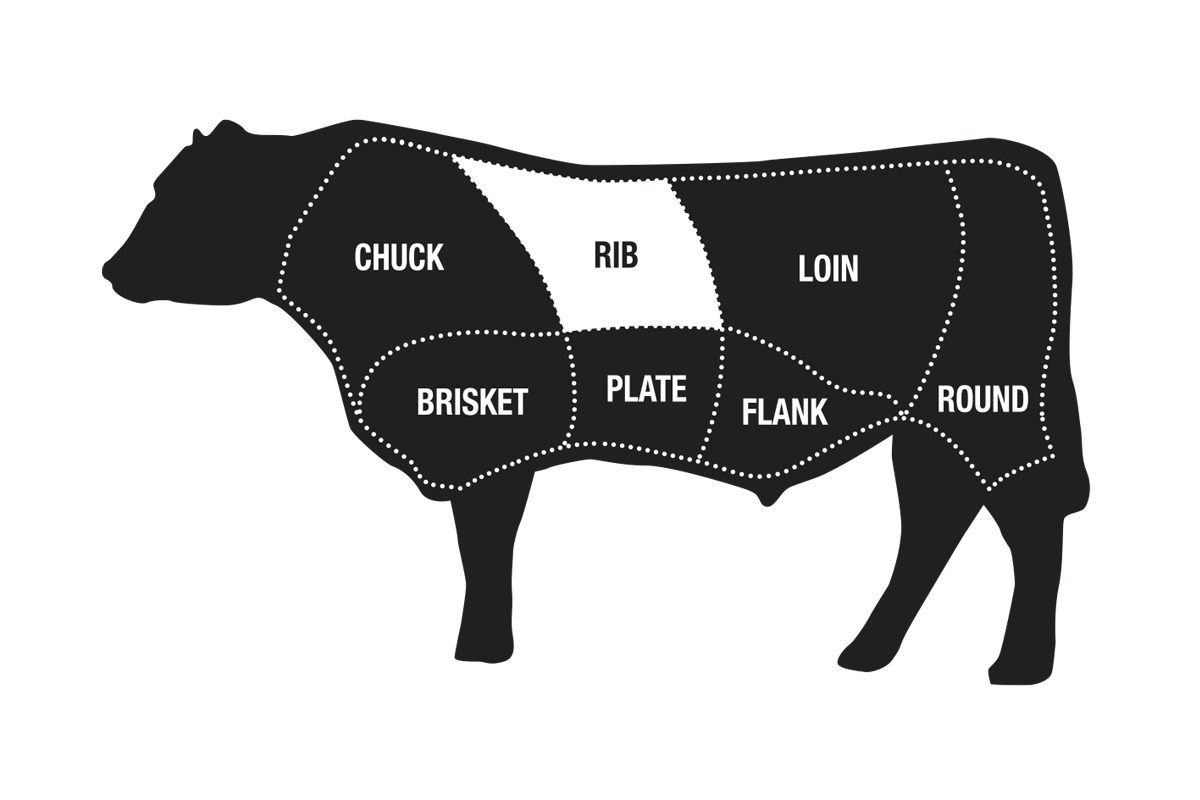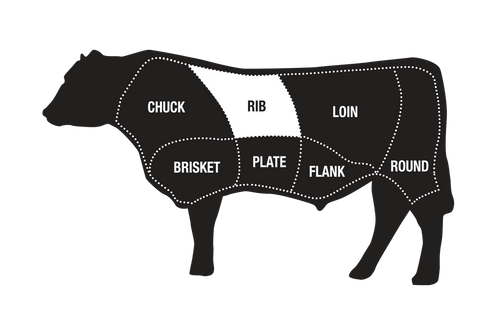Bone-in Prime Rib
Double R Ranch
Our premium USDA Choice bone-in prime rib roasts are well marbled, full-flavored and have a distinct appearance. Available 3 and 4 bone sizes.
Namesake Brand
Family-Owned & Operated
Flash Frozen
Make a splash at your dining room table with a bone-in Double R Ranch prime rib roast. Sometimes called a standing rib roast, ours are cut from the highly marbled section of the ribeye. Leaving the rib bones in place makes for a classic presentation, The bones insulate the savory beef from the heat of the oven so meat surrounding the bones cooks slower, leaving those sections extra juicy and tender. Each roast is tied with butcher’s twine for a wonderful, handcrafted aesthetic and more consistent cooking.
Average weights:
3 bone - 7 lbs.
4 bone - 9 lbs.
This is a natural product and weights can vary by +/- 0.75 pounds.
Please note: "prime rib" is the common name for a rib roast. The grade of this item is USDA Choice.
The two top USDA grades are Prime and Choice, which have the highest levels of marbling.
USDA Prime is the top grade on the USDA scale with the highest amount of marbling. Only 8 to 10% of all U.S. beef achieves this grade.
USDA Choice falls directly below USDA Prime. Choice beef is high quality and has less marbling but offers an excellent value.

Details
Make a splash at your dining room table with a bone-in Double R Ranch prime rib roast. Sometimes called a standing rib roast, ours are cut from the highly marbled section of the ribeye. Leaving the rib bones in place makes for a classic presentation, The bones insulate the savory beef from the heat of the oven so meat surrounding the bones cooks slower, leaving those sections extra juicy and tender. Each roast is tied with butcher’s twine for a wonderful, handcrafted aesthetic and more consistent cooking.
Average weights:
3 bone - 7 lbs.
4 bone - 9 lbs.
This is a natural product and weights can vary by +/- 0.75 pounds.
Please note: "prime rib" is the common name for a rib roast. The grade of this item is USDA Choice.
Cooking Tips
Beef Grading
The two top USDA grades are Prime and Choice, which have the highest levels of marbling.
USDA Prime is the top grade on the USDA scale with the highest amount of marbling. Only 8 to 10% of all U.S. beef achieves this grade.
USDA Choice falls directly below USDA Prime. Choice beef is high quality and has less marbling but offers an excellent value.








